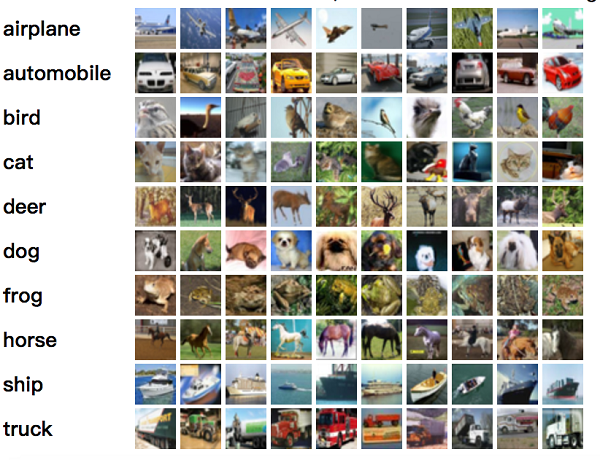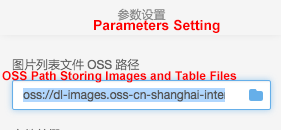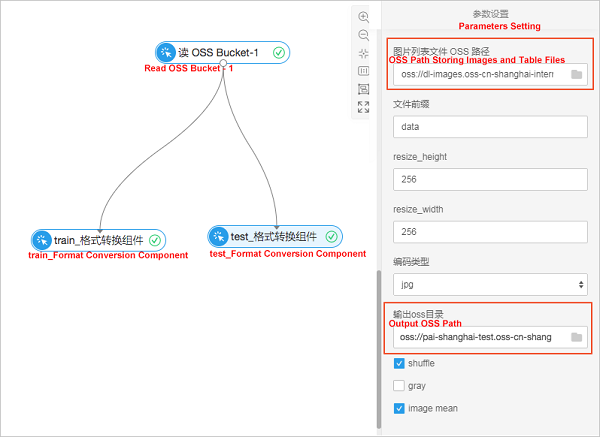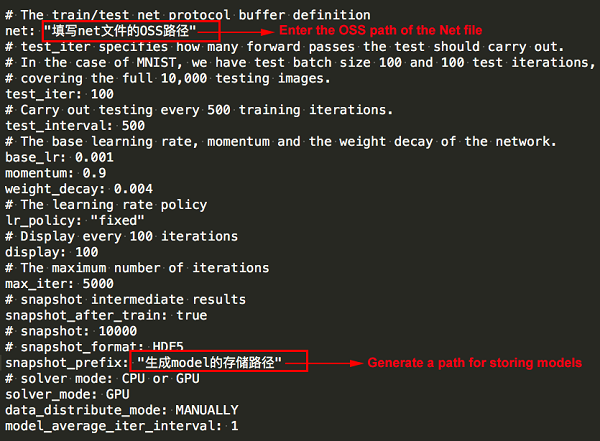Join us at the Alibaba Cloud ACtivate Online Conference on March 5-6 to challenge assumptions, exchange ideas, and explore what is possible through digital transformation.
By Garvin Li
The Image classification by Tensorflow section introduces how to use the TensorFlow framework of deep learning to classify CIFAR-10 images. This section introduces another deep learning framework: Caffe. With Caffe, you can complete image classification model training by editing configuration files.
Make sure that you have already read the Deep Learning section and activated deep learning in Alibaba Cloud Machine Learning Platform for AI (PAI).
This experiment uses a CIFAR-10 open-source dataset, containing 60,000 images with pixel dimensions 32 x 32. These images are classified into 10 categories: airplanes, automobiles, birds, cats, deer. dogs, frogs, horses, ships, and trucks. The following figure shows the dataset.

The dataset has already been stored in the public dataset in Alibaba Cloud Machine Learning Platform for AI in JPG format. Machine learning users can directly enter the following paths in the Data Source Path field of deep learning components:
Enter the path, as shown in the following figure:

The Caffe framework of deep learning currently only supports certain formats. Therefore, you must first use the format conversion component to convert the JPG images.

After format conversion, the following files are generated in the output OSS path, including a piece of training data and a piece of testing data.

Record the corresponding paths for editing the Net file. The following is an example of the data paths:
Enter the preceding paths in the Net file, as follows:

Edit the Solver file:



Alibaba Cloud Machine Learning Platform for AI: Online Predictive Deployment for Health Monitoring
Alibaba Clouder - October 22, 2019
Alibaba Clouder - August 4, 2020
Alibaba Clouder - October 24, 2019
Alex - January 22, 2020
Alibaba Clouder - November 5, 2018
youliang - February 5, 2021
 Big Data Consulting for Data Technology Solution
Big Data Consulting for Data Technology Solution
Alibaba Cloud provides big data consulting services to help enterprises leverage advanced data technology.
Learn More MaxCompute
MaxCompute
Conduct large-scale data warehousing with MaxCompute
Learn More Big Data Consulting Services for Retail Solution
Big Data Consulting Services for Retail Solution
Alibaba Cloud experts provide retailers with a lightweight and customized big data consulting service to help you assess your big data maturity and plan your big data journey.
Learn More ApsaraDB for HBase
ApsaraDB for HBase
ApsaraDB for HBase is a NoSQL database engine that is highly optimized and 100% compatible with the community edition of HBase.
Learn MoreMore Posts by GarvinLi
Start building with 50+ products and up to 12 months usage for Elastic Compute Service
Get Started for Free Get Started for Free